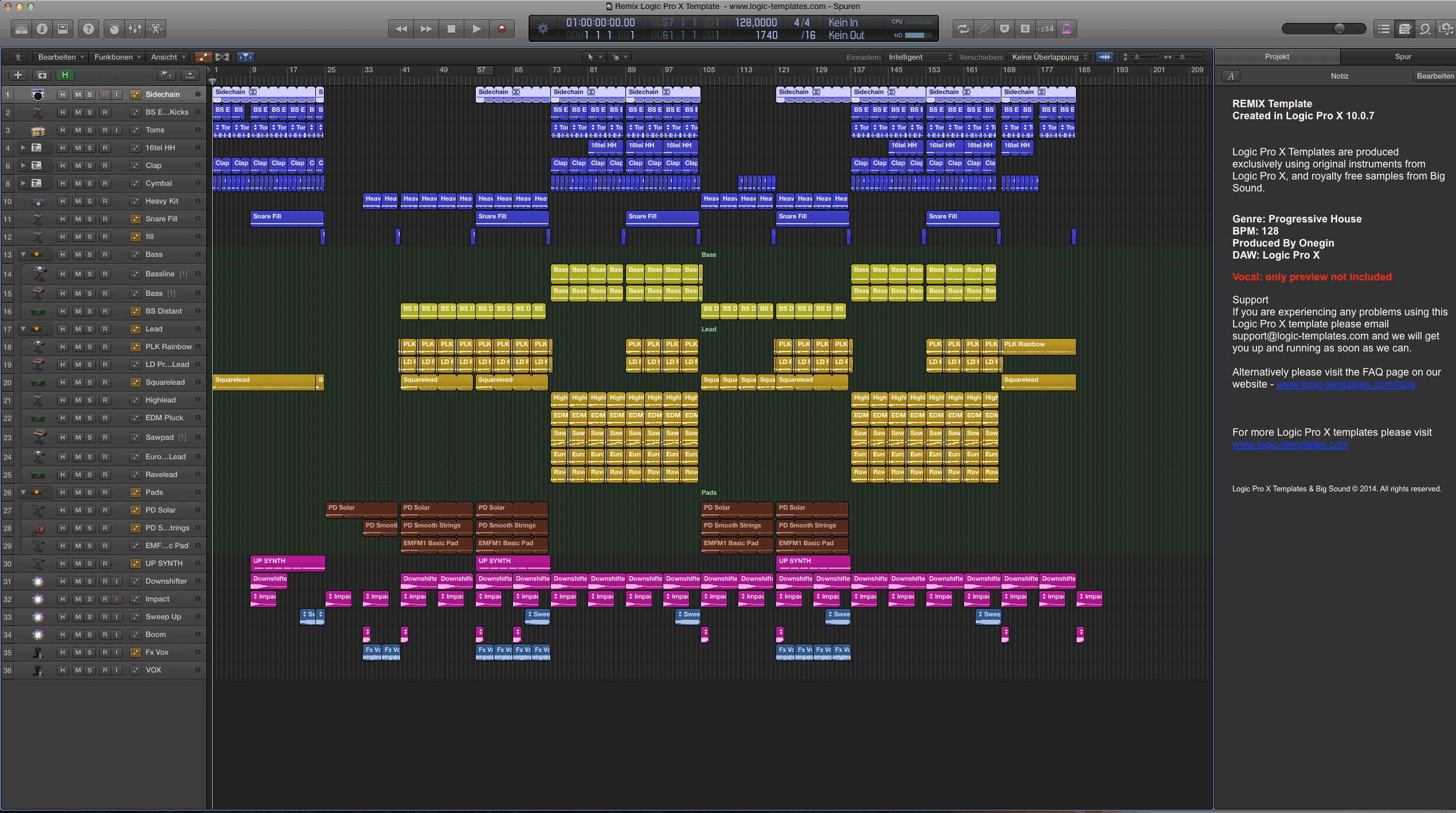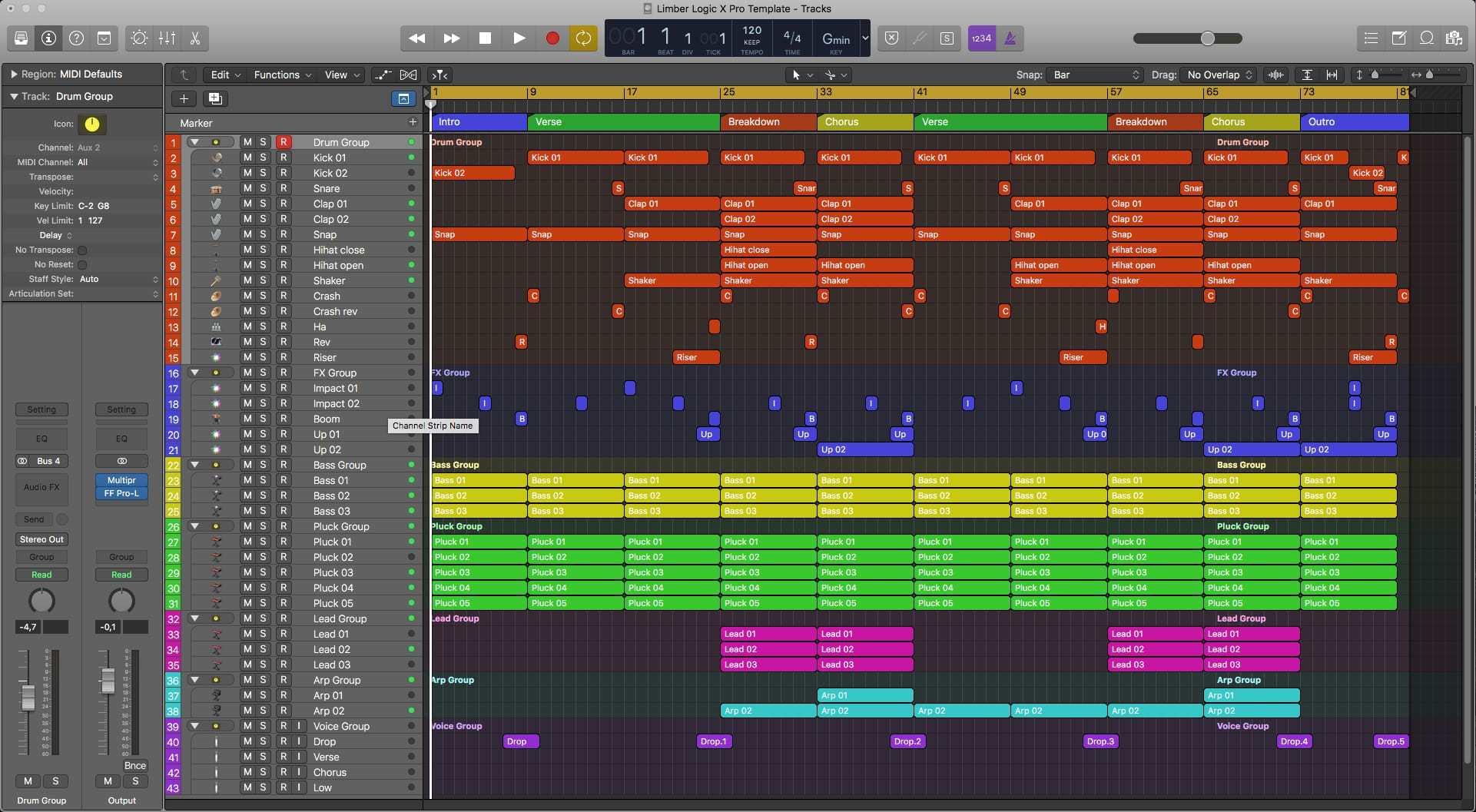
Your template would ideally have a wide range of different reverb and delay effects all set up and ready to go. For example, inputs 5-6 of my Apollo have my Kurzweil PC3 keyboard plugged into them in stereo, therefore I have labelled those inputs Kurzweil PC3 in the stereo input section. It’s good practice to name them according to how they will be used. You will find your inputs are presented in a list with mono inputs first, followed by stereo inputs. To set your own names for your audio interface inputs, double click in the Long column and type in the name of the instrument you have plugged into that input - Guitar, for example. Next, go to Mix / I/O Labels to configure the names of your inputs.

My inputs for my Apollo audio interface are for Guitar, Bass, VBass, Vocals and two keyboards in Stereo. Create an audio track for each instrument you want to record and set the input to the correct one for the source. Repeat the process, adding the drum/percussion instruments that you are likely to use.

I have added an EQ plug-in with a high-pass filter set at 80hz, I will use this on any synth part that isn’t the bass to remove excess bottom end so having it ready to go will speed up my workflow. Next, add the insert effects you are likely to use. For instance, if you struggle as a keyboard player add the Transposer MIDI effect into the MIDI Insert area and set the scale to your favourite key. Next, on each instrument track, add the inserts you are likely to use. Try to avoid creating hundreds of tracks with every option you might ever need and focus on only adding the things which have really worked for you. I chose Native Instruments Alicia’s Keys, Acousticsamples Mark79 Rhodes, Omnisphere Synth Bass, EXS24 Synth Pad and Alchemy Synth Lead. This gives me all of the different melodic elements I need to create a track.
#Logic pro x templates free Patch#
Create a range of virtual instrument tracks and on them put the virtual instruments you are most likely to use, then open each plug-in instrument and make sure you choose a patch that is inspiring to play. I’m going to create a singer/songwriter template but if you make music in many different styles you can always make multiple templates, one for each genre. Tracksįirstly, begin with a clear idea of the type of music you want to create. Your writing template should be like a beautifully maintained workplace - all the tools you require should be neatly laid out and easy to reach and anything redundant should be removed to unclutter your environment and keep you focussed. Creating a good template for writing music requires careful thought and constant evaluation. In this month’s Logic workshop we are going to look at setting up a template so that you can work in a fast and fluid way. If you are the sort of person that struggles to finish projects, you may benefit from organising your environment using Logic’s helpful template feature. Set yourself up for success with custom templates in Logic Pro X.

Here I have named my inputs according to what is plugged into them. The I/O Labels window in Logic lets you edit the name of your audio channels.


 0 kommentar(er)
0 kommentar(er)
